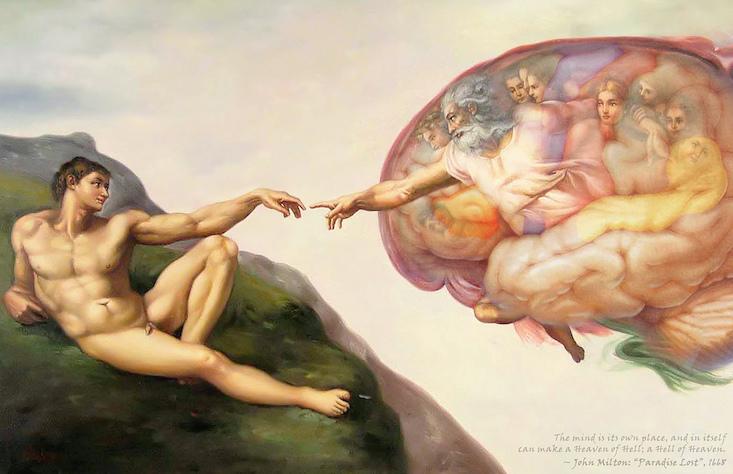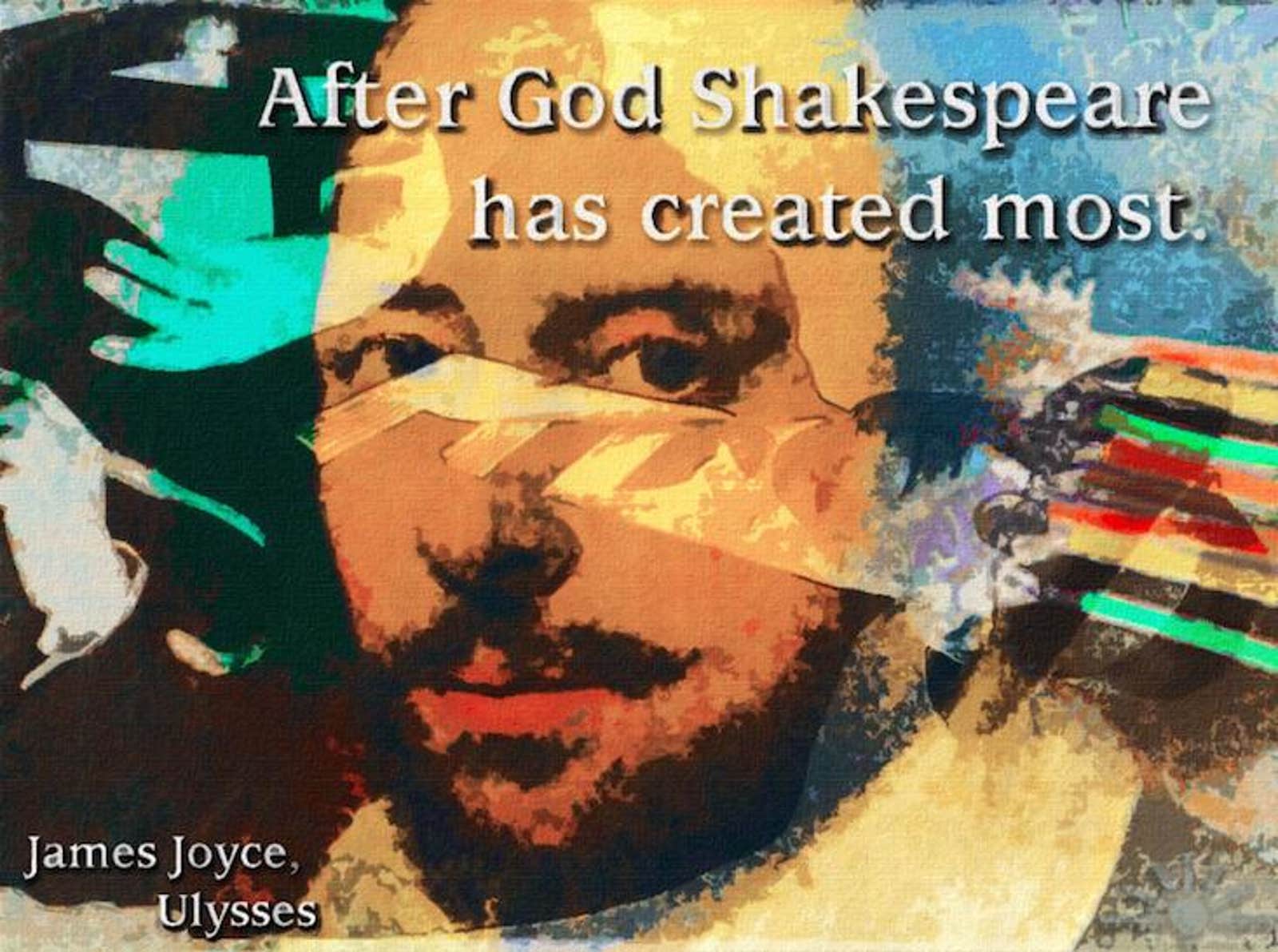Many modern novels do something that the earliest literature sometimes seems incapable of doing—representing the inner life of the individual, in all its complexity. The history of literature has been one of “gradual progression from narratives that relate actions and events to stories that portray minds in all their meandering, many-layered, self-contradictory complexities,” the psycholinguist Julie Sedivy observes in her recent Nautilus feature “Why Doesn’t Ancient Fiction Talk About Feelings?”
Characters in ancient literature, in other words, often appear more as ciphers than people, as abstract archetypes rather than as recognizable humans.
See how Gustave Flaubert, in his 1856 novel Madame Bovary, describes an internal state: “It wasn’t the first time in their lives that they had seen trees, blue sky and lawn, or heard the flowing of water or the rustle of the breeze in the branches, but never before, certainly, had they looked on it all with such wonder: it was as though nature had not existed before.”
Now compare that to a line from the ancient Egyptian masterpiece the Story of Sinuhe: “He flew to heaven and was united with the sun’s disk; the flesh of the god was merged in him, who made him. Then was the Residence hushed…the courtiers crouched head on lap; the people grieved.” Though the Story of Sinuhe explores exile and loss, and is beautiful in its evocations, one doesn’t encounter the same sense of interiority that one does in literature of the last few centuries. The same can be said of Gilgamesh. There is wisdom in these stories, but the authors have largely “told and not shown” (to appropriate creative writing parlance).
One hypothesis for why ancient characters were, overall, devoid of inner life, comes from maverick psychologist Julian Jaynes and his 1976 book The Origin of Consciousness in the Breakdown of the Bicameral Mind. Jaynes argued that ancient humans were not “conscious” like we are today—they lacked introspection and interpreted their inner monologue as generated by gods and muses. “It is perfectly possible that there could have existed a race of men who spoke, judged, reasoned, solved problems,” Jaynes wrote, “but were not conscious at all.” Jaynes sees a work like Homer’s Iliad as a late vestige of mental “bicameralism,” explaining that Hector and Achilles were “directed by [auditory] hallucinations” and that they “were not at all like us. They were noble automatons who knew not what they did.”
When did interiority arise?
Muses, daemons, and gods were real for the Greeks, voices heard in the process of thought or inspiration. Erich Auerbach’s 1946 book Mimesis: The Representation of Reality in Western Literature was concerned with the depiction of lived experience. He anticipated Jaynes, writing that Homeric style represents “phenomena in a fully externalized form, visible and palpable in all their parts,” adding that “[n]or do psychological processes receive any other treatment… nothing must remain hidden and unexpressed.” Jaynes would argue that nothing was left hidden or unexpressed because nothing could be hidden or unexpressed. The most ancient literature has no depictions of interiority because there was no interiority to depict.
When did interiority arise? Elizabeth Hart, a specialist in early literature, quoted by Sedivy, suggests it arose with the advent of print, allowing people to read in private and at their own pace, deepening cognitive skills and creating an appetite for complex and ambiguous texts. Jaynes, for his part, claimed the first glimmerings of consciousness appeared three millennia ago due to social, cultural, and material stresses, which began to break down the bicameral mind and overwhelm the inner voices of the gods. Because of his reliance on literary evidence, Jaynes was feted by literary types (John Updike blurbed the book’s first edition), though his fellow psychologists remained unconvinced, then and now. By giving consciousness a cultural origin, “Jaynes disavows consciousness as a biological phenomenon,” Christof Koch, president and chief scientific officer at the Allen Institute for Brain Science, told Veronique Greenwood for her Nautilus article on Jaynes, “Consciousness Began When the Gods Stopped Talking.”
However, as fantastical and compelling as Jaynes’ theory of the bicameral mind might be, we don’t have to rely on psychological or neurological evidence to debate it. There is one character drawn from literature who serves as a counter-example to the ancient hero with no inner life. Of course, you have to count the Bible as literature. Given his grandeur, pettiness, and complexity, and his capacity for introspection, he’s the major exception to the flatness of ancient characters—God. (There are also a few minor exceptions. Virgil, the ancient Roman poet, for one; and as literary historian Steven Moore has shown, there are forerunners to the novel long before Miguel Cervantes penned Don Quixote, from Apuleius’ The Golden Ass in 2nd-century Rome to Murasaki Shikibu’s The Tale of Genji in 11th-century Japan.) In biblical accounts God is both loving and jealous, merciful and vengeful, confident and surprisingly vulnerable. He is sometimes a god who doubts, and he can be capricious. Anticipating the contradictions and complexity of later literary characters, God says in Isaiah 45:7, “I form the light, and create darkness: I make peace, and create evil: I the Lord do all these things.”

God’s complexity may have something to do with the fact that the Bible is the story of the Hebrews’ transition from polytheism to monotheism. Since the “Documentary Hypothesis” of 19th-century philologists, we’ve understood how the Bible was edited, which involved the synthesis of disparate personalities embodied by different Canaanite deities into one God. Stylistically this process of editing multiple gods into one God resulted in a narrative that depicts a deity capable of interiority. Ancient characters, according to Jaynes, act because of what those gods outside of their heads tell them to do; the biblical character of God, however, has subsumed all those gods inside of His own head. Whatever the arguments of theology, the Jewish god is one who evolves over the course of the Biblical narrative—in contrast to the gods of Greek polytheism who, in terms of personality, largely remain static. As literary critic and former Jesuit priest Jack Miles argued in his 1995 book God: A Biography, the Jewish deity is “an amalgam of several personalities in one character.”
The earliest written portions of the Bible were composed by an anonymous, Judean poet called the “Yahwist,” after her favored term for the deity (scholar Harold Bloom controversially claimed that these portions were written by a woman in the court of Solomon). Other portions that refer to God as Elohim are by the Elohist, who lived in the northern kingdom of Israel (the word Elohim, not unimportantly, is grammatically plural). Following an Assyrian invasion of the northern kingdom, Israelite refugees assimilated with their southern neighbors, which involved the fusion of the national epics of Israel and Judea into the Torah. What resulted was the first multifaceted character of its kind in literature.
Miles argues that this creates the template for depictions of inner life, writing that the Bible is “far nearer in spirit to Hamlet than Oedipus Rex.” Similarly, Auerbach argued that there are two different types of mimesis in western culture: the classical, or the Homeric, and the biblical. Miles agrees, pointing out that it is the model provided to us by the Jewish Bible that more closely mimics consciousness. Oedipus Rex presents a monochromatic character whose thoughts are buffeted by forces greater than him. Hamlet, on the other hand, is like God, for his “character,” Miles writes, “is contradictory, and he is trapped within those contradictions.”
It’s this aspect that makes him more reminiscent of modern consciousness than any other ancient character. Monotheism’s genius was that one God necessitated the development of a complex psychology to depict him. Having more in common with Don Quixote than he does with Odysseus, God provided a template for the future creation of consciousness in fictional characters, and perhaps conscious readers.
Ed Simon is the associate editor at The Marginalia Review of Books, a channel of The Los Angeles Review of Books. He received his PhD in English at Lehigh University, where he studied 17th-century literature and religion. He has written for The Atlantic, The Paris Review Daily, Aeon, The Revealer, LitHub, and The Millions, among others. He can be followed at his website, or on Twitter @WithEdSimon.






























